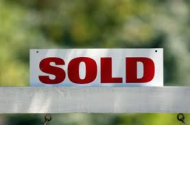If robot assisted aged care sounds too sci-fi to be true (as in the movie "Robot and Frank" 2012) then think again, as robotics and other high tech automation is already changing the face of aged care as we know it. While the all-singing, all-dancing model robots are grabbing attention on TV and at technology conferences, and there are many of these in development and being tested in aged care facilities, it is the less noticeable embedded technologies using GPS and sensors, together with relatively cheap and more accessible smart phone and tablet devices which are really taking off - creating "smart" homes and environments to promote independent living or create a safer institutional care environment.
In addition to the use (or adaptation) of generally available smart phone apps and tablets for older people, new technology can be deployed in the construction of new independent living and assisted living apartments, giving seniors the security of knowing the support is there if needed to maintain their independence for as long as possible. "Smart Homes" for seniors can provide many types of emergency assistance systems, security features, fall prevention, automated timers, and alerts. They allow people to feel secure in their homes with help only minutes away if needed, and allow remote monitoring by family members or carers by internet.
Home automation, webcams and sophisticated monitoring are part of the mix currently on offer. Improved GPS devices can help call for emergency assistance when needed, or quickly locate lost patients with dementia. There's also automated medicine dispensers and reminders to better help independent individuals or aged care facilities manage their medications. In addition there's sensors which can be installed in a person's living environment to monitor movement and pick up discrepancies or changes which may indicate health problems, enabling earlier diagnosis, intervention and preventative action.
From smart phone apps, and Vital Call pendants to sophisticated home sensors, these new technologies are supporting people to stay in their own home for longer and defer (or even avoid altogether) the need to move into a higher level care facility.
Home automation systems for the elderly include:
- "Embedded health systems" which integrate sensors and microprocessors in appliances, furniture, and clothing, collecting data that is analyzed and can be used to diagnose diseases and recognize risk patterns; and
- "Private health networks" which implement wireless technology to connect portable devices and store data in a household health database.
Smart homes can include devices to dispense medicine to ensure that necessary medications are taken at appropriate times and automated pill dispensers can dispense only the pills that are to be taken at that time and are locked; with versions available for Alzheimer’s patients with a lock on them. For diabetic patients a talking glucose monitor allows the patient to check their blood sugar level and take the appropriate injection; digital thermometers can recognize a fever and alert doctors; blood pressure and pulse monitors dispense hypertensive medications when needed; and even spoon feeding robots are available: see Wikipedia for more information on home automation applications for the elderly.
High-tech assistive technology for aging adults is “nearing science fiction territory,” as reported in an article in SmartMoney magazine . Examples include shoes that help keep your balance, a scanner that “reads” text aloud, and a voice-activated wheelchair that knows its way around the home. It also mentions wearable devices that can automatically detect falls and send web alerts to family members and carers, as well as ones that relay heart-rate and body-temperature changes, and motion and floor-vibration sensors that detect if you fall, walk abnormally or can’t get out of bed. See also Smart Gadgets for Savvy Seniors for more.
The Australian Government is funding trials of home based health technologies to support people in their homes, using the National Broadband Network.
“We’re seeing that providers are beginning to recognize that what people want to buy is independence,” says Brian Bischoff, the CEO of aging services technology provider Healthsense. "By using different service packages that employ technology, providers can help existing residents maintain independence, age in place, and stay out of the hospital. It costs more money for residents to move into higher levels of care, and families are starting to realize that," he says.
"For providers who have dual concerns of providing the best possible quality of care and experience for their residents, but who also need to consider the business perspective, using technology can help retain residents in a community or in a certain level of care, rather than lose them to a more acute setting." Read more in the article "Technology's Role in the Senior Care Continuum".









